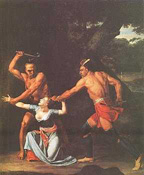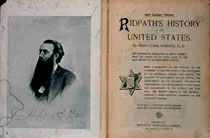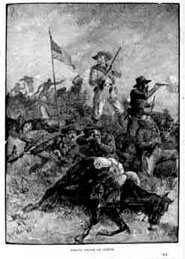|

American Indians rarely fare well in them. If you want to listen to a classroom presentation on this topic as you read this essay, just click on this audio link.
Consider the implications of this subtitle:
For Ridpath and other writers, Custer’s defeat functioned as a sort of climax of American history. It was a moment where the “savages” temporarily checked the advance of civilization…but Custer’s actual defeat proved a moral victory. By the time Ridpath completed his “Century Edition,” the Indian wars had ended. The massacre at Wounded Knee had put an end to overt acts of Native American resistance and could be interpreted as “Civilization’s” revenge against the Lakotas. Custer had lost, but America had won. For Ridpath, that was America’s story—and civilization’s destiny. But Ridpath’s textbook is an easy target. Few histories published over a century ago would measure up to today’s standards of cultural sensitivity. More recent textbooks must be better, right? Read this paragraph from ?????’s ?????? (198?):
How different is this than Ridpath’s textbook from 90 years earlier? ???? describes American Indians as the first wave of immigrants. Would most Native Americans agree with this characterization of themselves and their origins? Is there not a fundamental difference between the arrival of Europeans and Africans 400 years ago and Paleoindians at least 20,000 years earlier? And perhaps 40,000 years earlier? Why would this 198? Textbook present this sort of argument? For ?????, the difference between a Paleoindian and my immigrant grandmother is largely a matter of timing. The United States is portrayed as a place of inclusion—a melting pot and a nation in which people from many cultures come together to create a new identity. In this version of American history, differences between human being are not portrayed as being insurmountable—and perhaps not even important. We all become Americans…eventually. But what does this suggest about an individual’s racial, ethnic and cultural heritage? Are these things that should be cast off? Tribal sovereignty and cultural preservation are issues that generations Native people have struggled to maintain. Is there any indication of this in ?????’s introductory paragraph? Continue with this Online Essay
|
| |
Department
of Anthropology |
copyright © 2002
University of Illinois, All rights reserved. |



